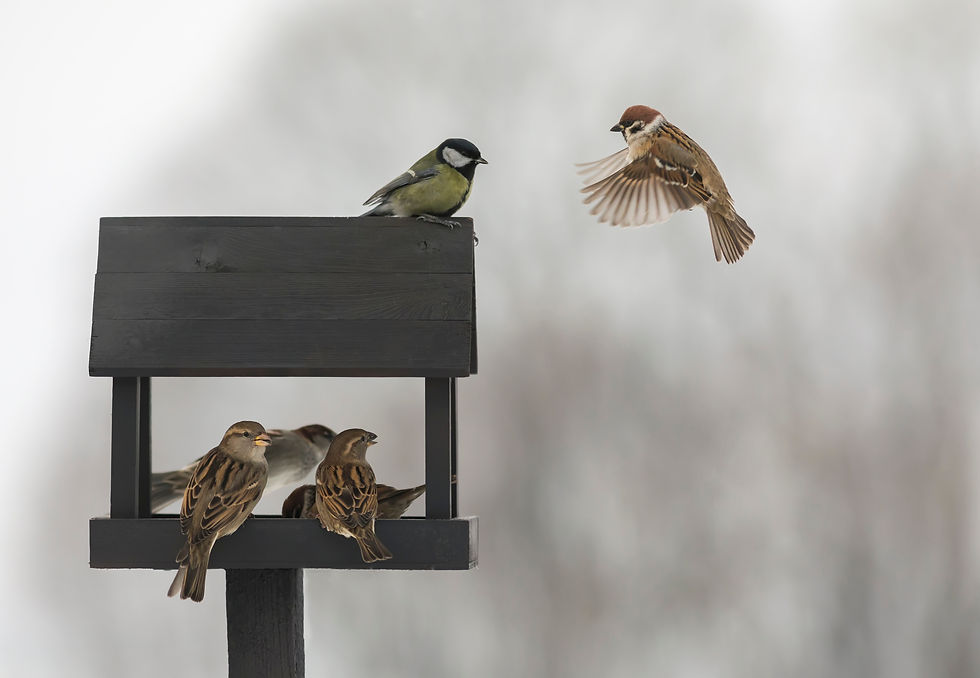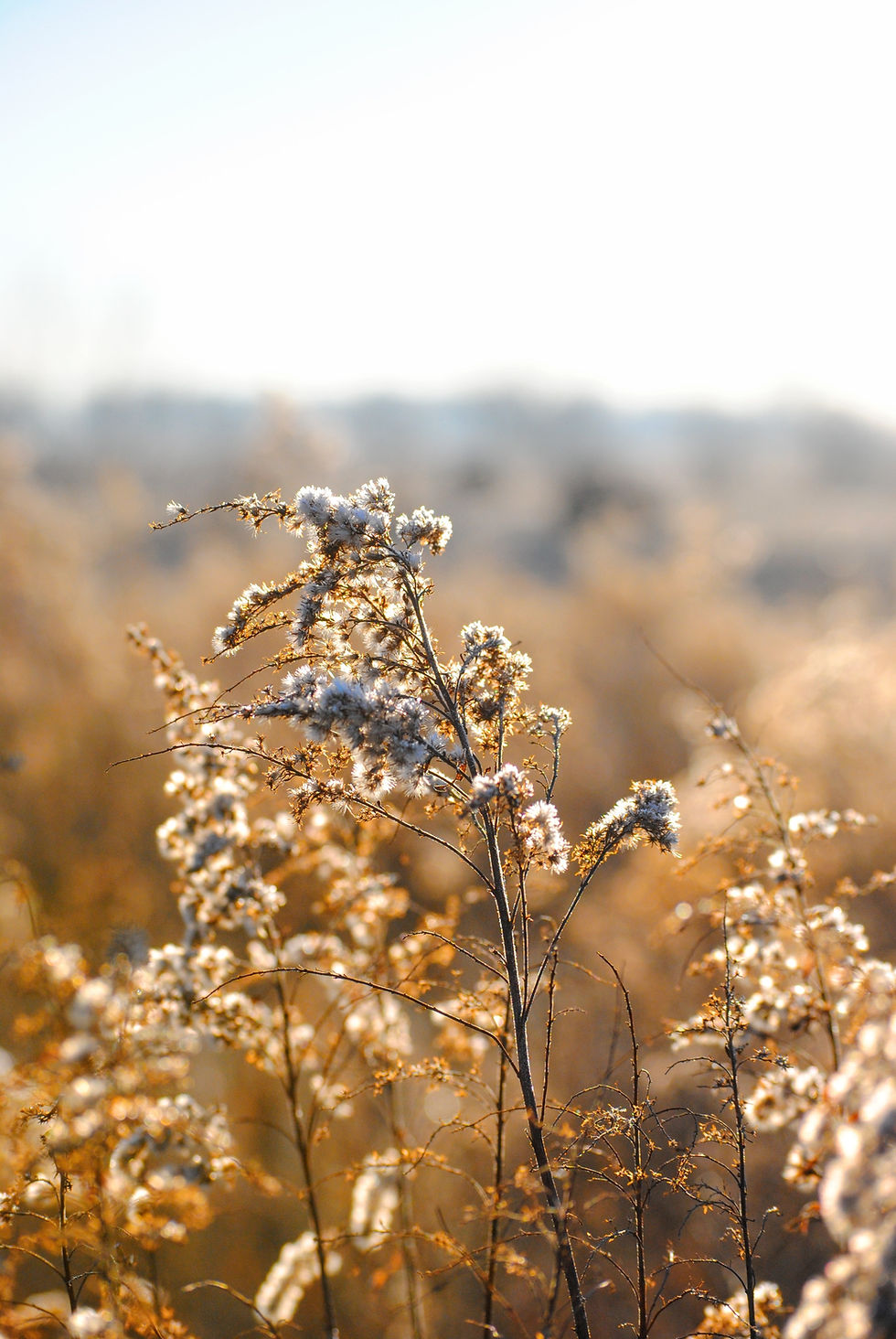Would you like to keep your neighborhood's avian friends happy this winter? Why not prepare your yard for wintering birds with the following tips!
**I am not sponsored or affiliated with any brand, product, or company mentioned below. If I were, I'd let you know!**
. . .

. . .
1. Clean Your Bird Feeders

Wild birds need clean feeders, too! Bird flu is spreading among them, so it's important to keep where they eat clean. It's recommended to put away your feeders to let them feed naturally, but if you are feeding them, clean your feeders!
You can do this with a hose, some soap, a small scrubber, and a power nozzle. Empty the feeders and knock as much seed as you can loose from the bottom if there is any stuck. We have one of the tall, cylindrical feeders and they tend to get stuffed at the bottom with seed dust and debris. Spray it aggressively with your hose nozzle on the strongest stream it has to get more seed loose and then tap it out. Scrub the INSIDE and outside of the feeder with your soap and scrub brush.
If you have the tall feeders like me, you'll need to get creative and patient. You will need to use either a bottle brush or a chopstick with a paper towel to maneuver around the inner cutouts and clean the grit off the walls. It took me a good five minutes. Give it another spray to get rid of soap, then leave to air dry. It's okay if it's not perfect; get as much grit and old seed buildup out as possible without driving yourself crazy.
**Protect yourself from illness by washing your hands after handling bird feeders and bird seed!**
2. Provide The Right Kind of Bird Seed

Look up what birds winter in your area. This will help you figure out what kind of seed mix you'll need for winter. Different blends attract different birds, so knowing who you're feeding will help you decide at the store. I've read online that winter seeds can be thistle (also known as nyjer) seeds, hulled peanuts, sunflower seeds, and black oil sunflower seeds. You should be able to find a decent mix for your needs at your local feed or hardware store.
3. Use the Right Feeders

Bird feeders are not created equal.
If you're looking to use certain seed or attract certain birds, you must also know their feeding preferences. Some birds prefer eating off the ground like Doves and Cardinals. Thistle seeds are best put in thistle socks so little birds like pine siskins and chickadees can easily grab hold of the material and pick the seed out. Many of them can feed at once from a thistle sock, too.
I just learned that Bluejays prefer to eat from trays or hopper feeders. We only have a tube feeder which the little birds like, and a small tray feeder that bigger birds struggle to eat from. We get almost a dozen Bluejays in our yard at a time, so if I want to better accommodate them and other large species this winter and beyond, I'll need to upgrade to a hopper feeder.

4. Offer Suet
Suet is great to give winter birds alongside regular bird seed. It provides them extra fat for the colder days. We just started putting it out for the Bluejays and other birds, and they have already gone through a whole block! I added a second feeder to a Chokecherry tree on the other side of the house. We'll see if they like it there or not soon enough.
If you'd like more information about suet, I found the article below helpful:
5. Add a De-Icer to Your Bird Bath or Buy a Heated Bird Bath

To provide water to winter birds, you can get a de-icer to place inside your bird bath. I'm currently looking at this one for ours, but we have a concrete base that I'm concerned will crack if the water freezes and thaws too often.
I found this article from Birds & Blooms about bird baths in winter helpful as well. They provide links to a couple different heated bird baths, including this detachable heated bird bath from Amazon. I may get one of these for our porch instead!
. . .
BONUS
6. Provide Shelter & Nest Filler
My fiancé thought of this one. It goes without saying that we all like a cozy place to relax when the weather gets cold, so why not help the neighborhood birds stay warm and dry, too?
We took down the only birdhouse we had since we couldn't remove the old nest inside, but on our trip to the Champlain Valley Craft Show a few weeks ago (read its post here), we found a booth selling birdhouses. This vendor thought about the old nest removal with strategically-placed screws, which sold us on it immediately. We wanted multiple bird families throughout the year.
With our reusable birdhouse in tow, we came upon another vendor with bird-lovers in mind. They were selling nesting balls, which were tumbleweed-like spheres stuffed with alpaca roving remnants from their herd. The fuzzy contents would provide nice insulation for winter nests, so we bought a refill bag.
Most of us don't have a nesting ball or bags of alpaca fur laying around, so what do we use instead? You can use a suet feeder cage or any other large-mesh container as a nesting ball. The container needs to have large openings so it's easy for the birds to pull filler out of.

"What do I fill it with now?" you ask.
NOT DRYER LINT, STRING (YARN INCLUDED) OR PLASTICS
According to All About Birds and Audubon, it's ill-advised to give dryer lint as filler because it crumbles after being exposed to moisture, and strings (even human hair) are a strangulation threat to birds and their young. Fill your nesting container with natural supplies like grass clippings, leaves, twigs, and fluff from untreated organic material (think milkweed, cattails, alpacas, cats*, dogs*).
*DO NOT USE PET FUR IF TREATED WITH TOPICAL FLEA MEDICATION
Check out these two articles for more nesting information:
In order to properly welcome winter birds to your yard, make sure you do the following: clean your feeders, provide the right kind of bird seed, use the right feeders for the birds you have around, try offering suet for a higher fat snack, and add a heated bird bath feature somewhere in your yard. If you're feeling extra-welcoming, provide a birdhouse and safe nesting filler to keep them warm this winter.
What kind of birds do you get around your house? Will you be feeding them over winter?



Komentarze